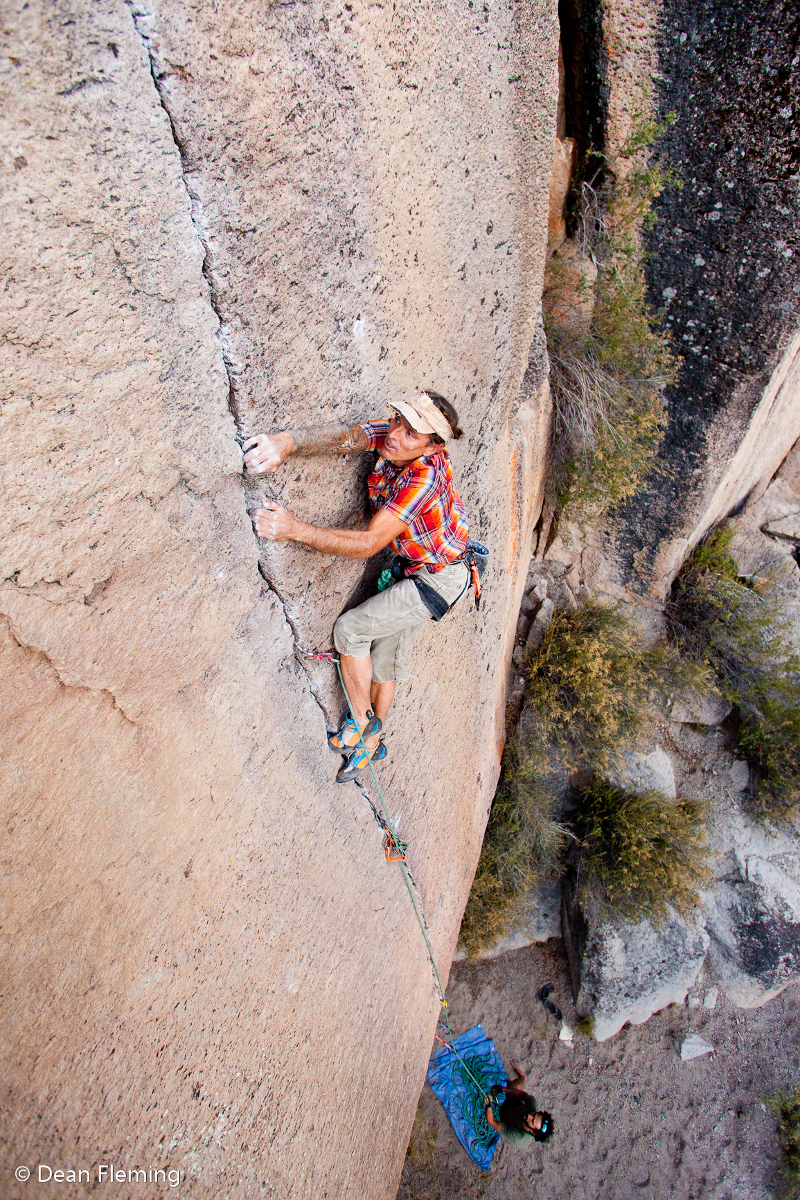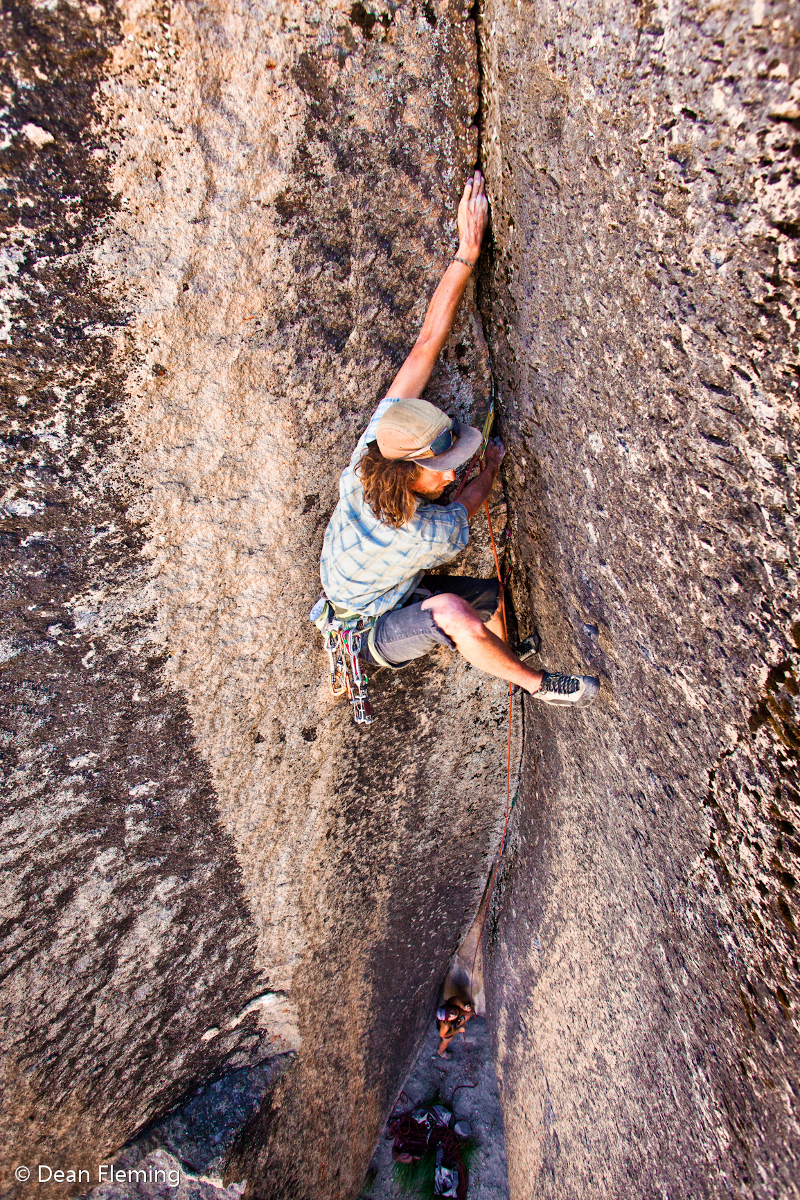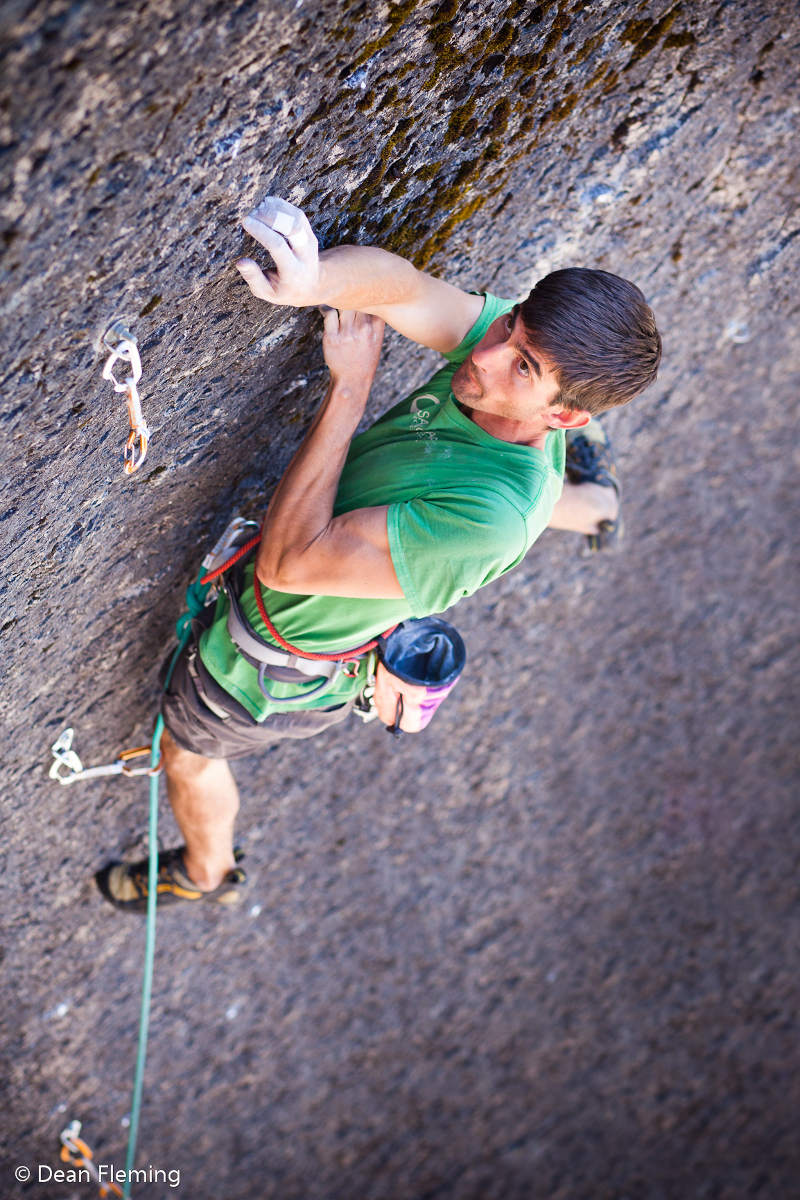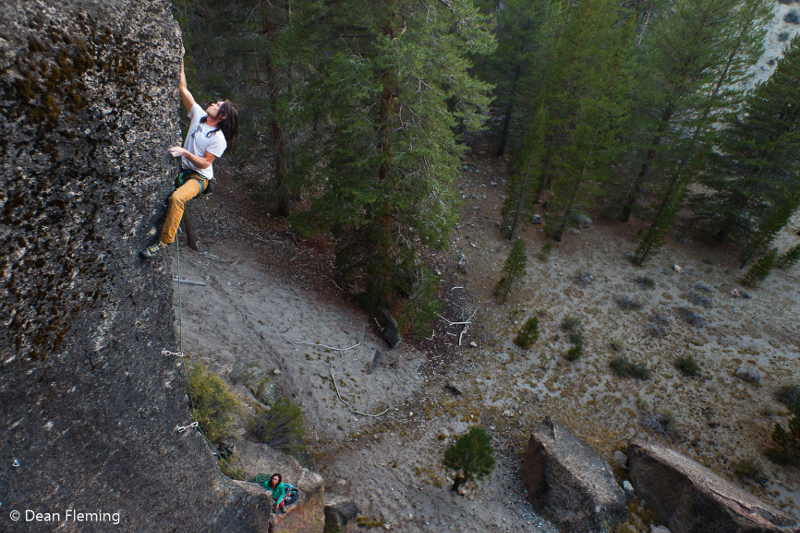Dean Fleming was born and raised in Sonora, CA, the gateway to Yosemite Valley. Once the youngest certified professional climbing guide in the country, he eventually combined his love of writing, photography, earth science, and rock climbing into a career of sharing his stoke and expertise through publishing. Dean is the author of the Columbia Bouldering Guidebook and the founder and editor of California Climber Magazine. In this series, he’ll be sharing a taste of some lesser-known, high-quality climbing areas in our favorite state, plus how to take care of these special places for years to come.
Words and images by Dean Fleming. This article was originally published in the Winter 2016 issue of CA Climber.

A typical autumn day for local climbers in the Eastern Sierra town of Mammoth Lakes starts with a full day of work at one of the many coffee shops, gear shops, eateries or rental shacks. The mountain town of Mammoth is almost entirely supported by multi-sport, four-season tourism, and to survive here usually requires some form of trade with visiting outdoor enthusiasts. As the clock strikes 5pm, racks and ropes are haphazardly thrown into camper shells that cover the beds of high mileage 4×4 trucks—vehicles that are almost always graffitied with “Sierra Pinstripes,” a term used lovingly to describe hundreds of scratch marks from the sage brush and pines that line the Mammoth area’s back roads.
The first beers of the day are promptly cracked while bumping down Forest Service Route 5n-whatever, en route to one of the hundreds of quiet albeit small granitic or volcanic cliffs and boulder fields that surround this portion of the East Side. In tune with its longstanding vacation spirit, Mammoth is a place where accurate beta, redpoints, and tick-lists are deemed irrelevant. Instead, snacks, tall cans, spliffs, and laughter are widely considered vital ingredients to a successful day at the crag. When the last ropes are pulled and the pads are folded, a short hike back to the truck is followed by a customary twilight dip in the icy waters of June Lake, Rock Creek or Lake Mary. Sleep, repeat; all the while planning for a weekend filled with larger objectives in the nearby High Sierra.

A web of fire and logging roads surrounds the June Lake Junction about 20 miles north of Mammoth Lakes. In the late 1970s and early 1980s, California climbers Errett Allen, Scott Cole, Shawn Plunkett, John Bachar, Kevin Leary, Dave Yerian, Dale Bard, Dennis Phillips, Steve Schneider, Bill Serniuk, Russ Walling, and Ron Kauk were among the first to scour these forest service roads in search of climbable stone. This was an era when strong traditional ethics still reigned supreme and influence and techniques gained from the nearby climbing Mecca of Yosemite National Park were the norm.
Adhering to this staunch traditional upbringing, climbers of the day would often seek out splitter cracks that could be climbed using natural protection in a ground-up method. While thousands of cracks abound on the granite buttresses of the Sierra Nevada, uncovering naturally protected routes on the often soft, bulbous, and pocketed volcanic rock formations near Mammoth Lakes was a rare occurrence. Then came 1980 when Dennis Phillips stumbled into the Lion’s Den; a discovery that lead to a newfound belief that quality cracks could be established on the Bishop Tuff.

As Forest Service Route 7942 sweeps northeast from Highway 395 near the June Lake Junction, it makes a wide turn above a deep depression in a sandy, pumice-strewn hillside adorned with fragrant pine trees. From this vantage the small crag known as the Lion’s Den is virtually invisible, with its varnished gold summit blending perfectly into the adjacent hillside. A quick hike across the road leads to a steepening scree-slope that slowly reveals a west-facing and gently overhanging band of solid volcanic rock. The Lion’s Den is comprised of a 300ft-wide welded tuff cliff band with short, steep, heavily featured arêtes. These dramatic edges are separated by smooth golden faces that yield a small selection of striking corners and splitter cracks. Three of these cracks, Classic Crack (5.10a), Fear of Flying (5.10c) and Block and Tackle (5.12a) are considered among the finest naturally protected routes on the Mammoth area’s welded tuff.
From a grand view of California rock climbing the Lion’s Den is a tiny crag, hosting fewer than ten leadable climbs on the entire cliff band. Yet these few routes span a massive range in difficulty from 5.9 all the way to 5.14. Lion’s Den also features an incredible range of styles on both the area’s bolted climbs and steep cracks. On the crack climbs you’ll find butt-scumming in Yosemite-style flares, calf-pumping stems, burly laybacking, technical 3½” cupped hands, 1¼” ring locks, creative gear placements and finger-torquing seams. The Lion’s Den is a great place to safely practice a wide range of advanced crack climbing techniques, but if you’d rather clip a few bolts or get a quick pump on some steep face climbing, the cliff has a fair selection of bolted routes. Here you’ll encounter bouldery moves on overhanging rock that ranges in style from knife-edge arêtes to sheer faces with small in-cut crimps and pockets.

If you’re looking for the best cracks and the highest quality stone in the Sierra Nevada, drive a few miles north to the towering buttresses and packed base camps at the Hulk. Or maybe just a few miles west to Yosemite National Park, where the lines on the cliffs are matched in stature only by the lines for the bathrooms and campsites.
But if it is solitude you seek, in a place where the sweet smell of sagebrush and butterscotch from towering Jeffrey pines intensifies in the morning sunshine, where the shadows creep across the otherwise flat valley before rising thousands of feet to the dramatic east summits of the Sierra Nevada, where camping is free, the climbs are steeped in history and the grades are irrelevant, maybe you’ll like the Lion’s Den. Or perhaps, like the early climbers who came before us, you’ll find your own little nook in the vast swath of rock that is so plentiful in the Eastern Sierra.

Special Concerns
As with any area in the Sierra Nevada or elsewhere, Leave no Trace practices should be stringently followed while visiting Lion’s Den. As there are no bathrooms or other facilities nearby, visitors should consider bringing Wag Bags to properly dispose of human waste. At a minimum, consider bringing a full size shovel and learning how to properly bury human waste in the backcountry. Camping in existing sites along the dirt service roads that access this stretch of National Forest land is free and legal, yet depending on the time of year, there may be restrictions on campfires in this region.
Fires are a major concern in this area, and their impact can be seen in the devastating blaze that engulfed the nearby crag Clark Canyon just a few years ago. Please check for fire restrictions before visiting and if you plan to have a campfire, please obtain a fire permit from the Forest Service or a local Fire Station.

